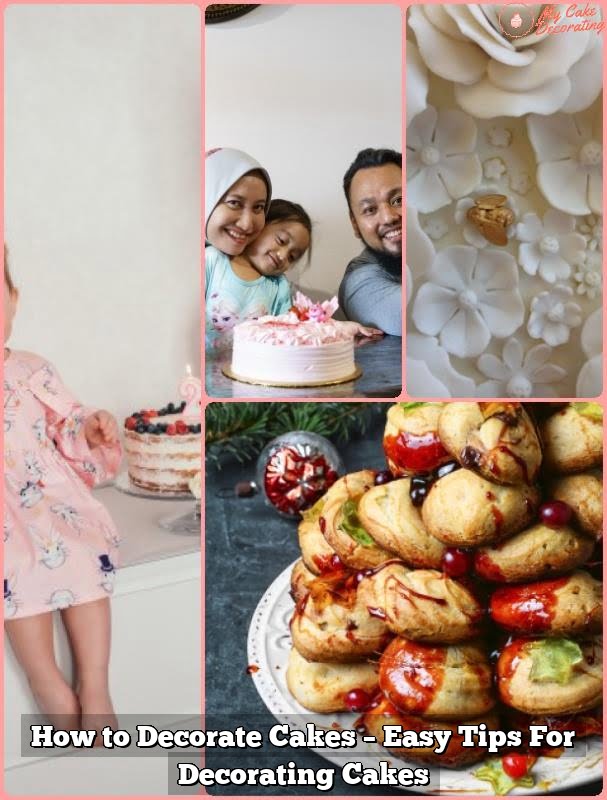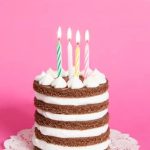Are you looking to make your wedding day extra special with a personalized touch? In this article, we will guide you on how to decorate wedding cakes at home. From essential tools and ingredient gathering to mastering buttercream and creative cake design ideas, we will take you through the step-by-step process of creating a stunning DIY wedding cake.
Many couples are opting for DIY wedding cake decorating for various reasons. Not only does it allow for a more intimate and customized experience, but it can also be cost-effective compared to ordering a professional cake. By putting your creativity to work, you can create a unique masterpiece that reflects your style and tastes, making your special day even more memorable.
Whether you’re a baking enthusiast or just looking to try something new, this guide will provide you with the tips and techniques needed to successfully decorate your own wedding cake. From choosing the perfect cake base and preparing the layers to adding personalized details and final decorative touches, we will walk you through each step of the process. So roll up your sleeves and get ready to impress your guests with a beautiful homemade wedding cake.
Gathering Supplies
When embarking on the journey of decorating a wedding cake at home, it is imperative to have the right tools and ingredients at your disposal. Whether you are a novice baker or an experienced one, having the essential supplies will make the process smoother and more enjoyable.
Some of the basic tools you will need include a turntable for easy frosting application, offset spatulas for spreading frosting evenly, piping bags and tips for intricate designs, and a bench scraper for smooth edges.
In addition to tools, gathering high-quality ingredients is key to creating a delicious and visually appealing wedding cake. Choose the best quality flour, sugar, butter, eggs, and other baking essentials to ensure that your cake not only looks stunning but tastes exceptional as well. Consider investing in premium vanilla extract or other flavorings to elevate the taste of your cake layers.
When it comes to specialty ingredients like fondant or edible decorations, make sure to purchase them from reputable suppliers for the best results. Having all your supplies organized and within reach before you start decorating will streamline the process and allow you to focus on bringing your creative vision to life. By being well-prepared with the right tools and ingredients, you can confidently tackle the task of decorating a wedding cake at home.
Choosing the Perfect Cake Base
When it comes to decorating a wedding cake at home, one of the most important decisions to make is choosing the perfect cake base. From the flavor to the texture, the cake itself sets the foundation for your decoration efforts. One popular option is a classic vanilla or chocolate sponge cake, which serves as a versatile canvas for various decorations. Alternatively, you may opt for more unique flavors like red velvet, lemon, or even funfetti for a whimsical touch.
Considering Dietary Restrictions
In today’s diverse world, it’s also crucial to consider any dietary restrictions that may affect your choice of cake base. If you have guests who are gluten-free, dairy-free, or vegan, there are plenty of alternative recipes available that can cater to their needs without compromising on taste or texture. Experimenting with different ingredients such as almond flour, coconut milk, or aquafaba can open up a whole new world of possibilities for decorating wedding cakes at home.
Texture Matters
Another factor to keep in mind when selecting the perfect cake base is texture. Some prefer a light and fluffy chiffon cake, while others may enjoy a denser pound cake for added richness.
The texture of your chosen cake will not only impact the overall taste but also influence how well it holds up under layers of buttercream and decorations. Consider conducting small test batches before committing to a final recipe to ensure that your chosen cake base complements your decoration plans effectively.
Preparing the Cake Layers
Baking the cake layers may require some patience as you wait for them to rise and develop a beautiful golden brown color. Be sure to rotate the pans halfway through baking to ensure even cooking. Once the cakes are done, allow them to cool completely before attempting to level them. Use a long serrated knife or a cake leveler to trim any domed tops and create flat, even layers that will stack well.
Leveling your cake layers is crucial for achieving a professional-looking wedding cake. A flat and even surface ensures that your tiers will stack neatly without any leaning or sliding. Take your time when leveling each layer and use a gentle sawing motion with your knife for precision. Remember, practice makes perfect, so don’t get discouraged if it takes a few tries to get it just right.
| Preparing Cake Layers Tips | Baking Cake Tips |
|---|---|
| Divide batter evenly among pans | Rotate pans halfway through baking |
| Cool cakes completely before leveling | Use gentle sawing motion when leveling |
Mastering Buttercream
Buttercream is a classic choice for wedding cake decorating due to its creamy texture and versatile flavor options. To create a smooth buttercream finish on your DIY wedding cake, it’s essential to start with the right recipe. A simple buttercream recipe typically consists of butter, confectioners’ sugar, vanilla extract, and a splash of milk or cream. However, there are variations such as Swiss meringue or Italian meringue buttercream that result in a smoother and less sweet frosting.
Once you have chosen your buttercream recipe, the key to achieving a smooth application lies in proper technique. Start by crumb coating your cake with a thin layer of buttercream to lock in any loose crumbs.
Then, use an offset spatula to apply a thicker layer of buttercream on the sides and top of the cake. To achieve a perfectly smooth finish, try using a bench scraper or icing smoother to gently scrape around the edges of the cake while rotating it.
For those looking to add extra flair to their DIY wedding cake, consider experimenting with different piping techniques using buttercream. From intricate lace designs to elegant rosettes, piping offers endless possibilities for customizing your cake’s look. Additionally, incorporating edible decorations such as fresh flowers or edible pearls can add a touch of sophistication to your design. Overall, mastering buttercream techniques will allow you to create a beautiful and professional-looking wedding cake from the comfort of your own home.
| Topic | Data |
|---|---|
| Buttercream Recipe | Versatile flavor options |
| Technique | Crumb coating and using an offset spatula |
| Piping Techniques | Intricate lace designs and rosettes |
Creative Cake Design Ideas
When it comes to decorating wedding cakes at home, the design plays a crucial role in creating a stunning centerpiece for your special day. Whether you opt for a traditional floral look or a more contemporary geometric design, the possibilities are endless. To inspire your creativity, here are some creative cake design ideas that you can easily achieve in the comfort of your own kitchen:
- Elegant Floral Theme: Embrace the romance of a wedding with intricate sugar flowers cascading down your cake tiers. From delicate roses to blooming peonies, floral designs add a touch of elegance and sophistication to any wedding cake.
- Vintage Charm: For a timeless look, consider incorporating lace patterns or pearl embellishments onto your cake. These intricate details will give your dessert a vintage touch that exudes classic charm and style.
- Modern Geometric Patterns: If you prefer a more contemporary and minimalist aesthetic, geometric designs are perfect for creating a sleek and stylish wedding cake. Opt for clean lines, sharp angles, and bold shapes to make a statement on your dessert table.
Whether you choose to go for an elegant floral theme or embrace modern geometric patterns, remember that the key to successful cake design lies in attention to detail and precision. Experiment with different techniques such as piping, fondant work, and edible decorations to bring your vision to life. With practice and patience, you can create a show-stopping wedding cake that not only looks beautiful but also tastes delicious.
Incorporating personalized details such as monogrammed initials, significant dates, or favorite colors can add an extra layer of meaning to your DIY wedding cake. These finishing touches will make your creation truly unique and memorable for both you and your guests. By infusing your personality into the design, you can transform a simple homemade cake into a stunning masterpiece that reflects the love and joy of your special day.
Decorating Tools and Techniques
Decorating a wedding cake at home can be a rewarding and fun experience, allowing couples to add a personal touch to their special day. One of the key aspects of decorating a wedding cake is mastering various tools and techniques to achieve professional-looking results. Here are some essential tools and techniques for piping, fondant, and edible decorations that will help elevate your DIY wedding cake:
- Piping Techniques: Piping bags and tips are essential for creating intricate designs on your wedding cake. Experiment with different tips to create beautiful borders, intricate lace patterns, or delicate flowers. Practice different pressure levels to master the art of piping consistency.
- Fondant Application: Fondant is a versatile medium for covering cakes and creating smooth, elegant finishes. Roll out the fondant evenly using a rolling pin and apply it carefully over the cake to prevent air bubbles. Use fondant tools to smooth out any wrinkles or imperfections.
- Edible Decorations: Edible decorations such as sugar flowers, edible pearls, or metallic accents can add an elegant touch to your wedding cake. Consider incorporating fresh flowers, fruits, or herbs for a natural and organic look. Be sure to use food-safe materials when decorating with edible items.
Mastering these decorating tools and techniques will take your DIY wedding cake from amateur to professional level. It’s all about practice, patience, and attention to detail when it comes to achieving stunning results that will impress your guests on your big day. Remember to have fun with the process and let your creativity shine through in every decorative element you add to your masterpiece.
Finishing Touches
After successfully mastering the art of decorating a wedding cake at home, it’s time to add those final touches that will truly make your creation stand out. Personalizing your cake with unique details will not only make it special but also showcase your creativity and attention to detail. From monogrammed initials to intricate piping designs, there are countless ways to take your DIY wedding cake to the next level.
One popular way to add a personalized touch to your wedding cake is by incorporating elements that reflect the couple’s personality or interests. For example, if the couple loves traveling, consider adding edible map decorations or miniature landmarks on top of the cake.
If they are avid readers, creating a cake design inspired by their favorite books can be a thoughtful and unique choice. The key is to think outside the box and incorporate elements that resonate with the couple’s story.
In addition to personalization, adding final decorative flourishes can elevate the overall look of your DIY wedding cake. Consider using fresh flowers, edible gold leaf, or intricate sugar sculptures to add dimension and visual interest. Don’t be afraid to experiment with different textures and techniques such as ruffles, dragees, or marbling. The key is to have fun with the process and let your creativity shine through in every aspect of decorating your wedding cake at home.
Troubleshooting Tips
Decorating a wedding cake at home can be a rewarding and budget-friendly option for couples looking to add a personal touch to their special day. However, it’s not without its challenges. From uneven layers to smudged frosting, common decorating mistakes can occur even with the best of intentions. But fear not, with some handy troubleshooting tips, you can easily fix these hiccups and still create a stunning centerpiece for your celebration.
One common issue that many DIY cake decorators face is air bubbles in the frosting or icing. This can result in an unattractive finish on the cake surface. To tackle this problem, simply use a small pin or toothpick to gently poke the air bubbles and then smooth out the area with an offset spatula. Be sure to do this gently and gradually to avoid creating holes or disrupting the overall look of your cake.
Another frequent mishap is when the buttercream or fondant starts sliding off the cake layers, especially in warm weather. To prevent this from happening, make sure to refrigerate your cake layers before applying the frosting. Additionally, if you notice any signs of slipping while decorating, place the entire cake in the fridge for a few minutes to firm up the buttercream or fondant. This will help keep everything in place until you’re done with your decorative touches.
Lastly, one of the most frustrating issues that can occur during cake decorating is when your piping doesn’t come out as smoothly as you’d like. If you’re struggling with inconsistent piping lines or shapes, practice on a piece of parchment paper before moving onto your actual cake.
Additionally, make sure that your buttercream or icing consistency is just right – it should be firm enough to hold its shape but not too stiff that it becomes difficult to pipe. With a bit of patience and practice, you’ll be able to achieve professional-looking decorations on your homemade wedding cake in no time.
Showcasing Your Masterpiece
Creating your own wedding cake can be a rewarding and budget-friendly option for couples looking to add a personal touch to their special day. By following the tips and guidelines outlined in this article, you can learn how to decorate wedding cakes at home with confidence and creativity.
From gathering the essential tools and ingredients to mastering buttercream techniques and exploring various cake design ideas, every step in the process plays a crucial role in achieving a stunning end result.
Once you have put in the hard work of baking, decorating, and assembling your DIY wedding cake, it’s time to showcase your masterpiece. Presentation is key when it comes to displaying and serving your creation to impress your guests.
Consider elevating your cake on a beautiful stand or pedestal to make it a focal point at the reception venue. Additionally, incorporating fresh flowers, greenery, or other decorative elements that match your overall theme can enhance the visual appeal of your cake.
Remember that serving your DIY wedding cake requires careful planning as well. Make sure you have the necessary tools on hand, such as a sturdy cake server and knife, to ensure clean cuts and easy portioning for guests.
Lastly, don’t forget about storing any leftover cake properly to maintain its freshness for future enjoyment. By taking into consideration these showcasing tips for displaying and serving your DIY wedding cake, you can truly make it a centerpiece of your celebration that reflects your unique style and love story.
Frequently Asked Questions
How Do You Simply Decorate a Wedding Cake?
Decorating a wedding cake can be simple yet elegant by using fresh flowers, ribbon, or even edible decorations like pearls or fondant shapes. Keeping the design minimalistic and classy can create a stunning look without being overly complicated.
What Can I Put on Top of a Wedding Cake?
There are several options to top a wedding cake, such as a traditional bride and groom figurine, fresh flowers matching the bouquet, monogram cake toppers, or even personalized wooden or acrylic toppers with the couple’s name. The key is to choose something that reflects the couple’s style and personality.
What Kind of Icing Do You Use to Decorate a Wedding Cake?
When decorating a wedding cake, choosing the right icing is crucial for both taste and appearance. Buttercream icing is popular for its creamy texture and versatility in creating different designs like rosettes or smooth finishes. Fondant is another popular choice for its smooth look and ability to create intricate details.
Whipped cream frosting is light and airy but best used on cakes displayed indoors due to its stability issues with temperature changes. Ultimately, the icing choice should complement the overall design of the cake.

Welcome to my blog about home and family. This blog is a place where I will share my thoughts, ideas, and experiences related to these important topics. I am a stay-at-home mom with two young children. I hope you enjoy reading it! and may find some helpful tips and ideas that will make your home and family life even better!





